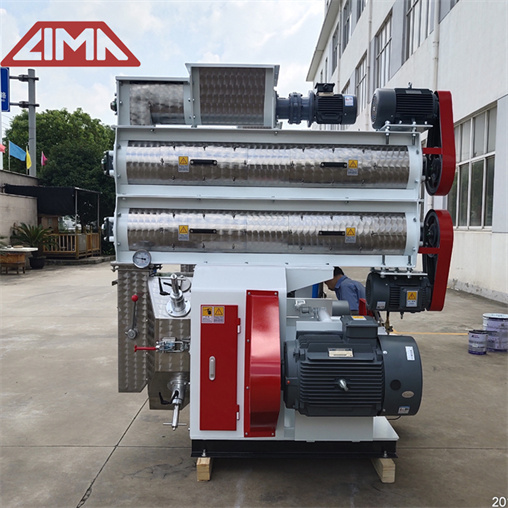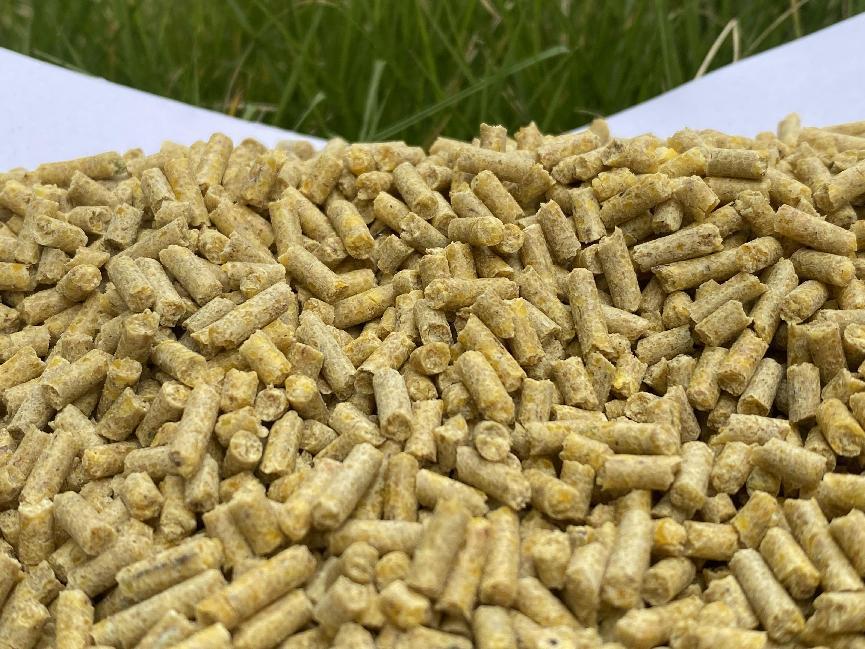Pulverizers, pellet mills, extruders, etc. are the most commonly used processing equipment in feed factories, and the level of their output directly determines the production efficiency and capacity of the feed factory. There are many factors that affect the output of feed processing equipment. In addition to the factors such as equipment assembly, debugging, or maintenance and maintenance during use, there are mainly the following aspects, which have caused the problem of output decline in the pulverizer, feeder and extruder.
1. Several factors that cause the low output of the granulator1. Ring mode factor
The surface of the bell mouth of the ring die is rolled and needs to be chamfered again.
Improper selection of ring die compression ratio. The more suitable compression ratio should be: 9~13 for livestock and poultry feed; 12~15 for fish feed; 20~25 for shrimp feed; 5~9 for heat-sensitive feed; 6~9 for grass and straw feed.
When the die hole is blocked, tap the blocked hole from the outside of the ring die to the inside to remove impurities.
The opening rate of the ring die is too low, resulting in low output.

2. Roller factor
The pressure roller shell is worn and needs to be replaced in time.
The combination of the new ring die and the old press roller, and the new press roller and the old ring die will cause low output. A new ring die with a new pressure roller shell should be used for granulation, so that the overall contact gap between the pressure roller and the ring die is consistent, and the purpose of uniform wear is achieved.
3. Conditioner blade factors
After the blade is worn, the effect of material conditioning is affected, and the material mixing and steam absorption effect is poor; the material softening of the conditioner is not good, which affects the particle pulverization rate and output.
4. Quenching and tempering temperature factors
The conditioning temperature is too low, and the reasonable conditioning temperature is recommended to be controlled at: 70~88 for livestock and poultry feed; 82~95 for fish feed; 90~105 for shrimp feed; 45~69 for heat-sensitive feed. The above recommended temperatures are in degrees Celsius.
5. Steam quality factor
The steam pressure of the sub-cylinder should be ≧0.6Mpa; the steam pressure after decompression is 0.1~0.3Mpa; the steam trap works normally to ensure that the steam is saturated steam without condensate.
2. Several factors that lead to the low output of the pulverizerWhether the material has passed through the crushing section once.
Whether the material has added grease in the secondary mixing.
Whether raw materials such as silkworm chrysalis are added to the formula.
Whether the steering of the guide plate and the host is consistent.
Whether the solenoid valve of the dust collector is blowing normally, and whether the cloth bag is blocked.
The fan configuration of the dust collector is wrong, and the direction of the fan is wrong.
The gap between the hammer and screen is not suitable, and the hammer is severely worn.
The sieve plate is seriously worn.
The arrangement of the sieves is wrong, and the opening rate is too low.
The supplementary air outlet of the impeller feeder is not open or the opening degree is not appropriate.
The moisture content of raw materials is too high.
The sieve hole diameter does not meet the requirements, resulting in excessive crushing of the material.
The original hammer and screen are not used.
Whether the smooth and rough surfaces of the screen are installed correctly.
The sedimentation chamber has serious powder leakage (especially in the air transport system, between the pulverizer and the sedimentation chamber).
 3. Factors of low output of different materials extruded by extruder
3. Factors of low output of different materials extruded by extruder1. Low yield of puffed soybeans
The screw head is severely worn.
The bushing of the expansion chamber is seriously worn.
The pressure ring and wear ring are severely worn. At this time, the worn related accessories should be replaced in time, and the large-sized pressure ring can be used as a small-sized pressure ring. For example: the pressure ring of ¢209 is worn out and can be used as the pressure ring of ¢207.
The customer wants to obtain the finished puffed soybean product with lower urine enzyme activity.
Soybeans are too finely ground.
The tension of the V-belt is relatively loose, and the tensioning of the V-belt should be checked in time. If the belt is aging, the entire set of belts should be replaced together.
If the quality of the steam entering the conditioner is poor, the quality of the steam should be checked in time, and the drainage system of the steam pipeline should be checked.
2. Low yield of puffed corn
The screw head is severely worn.
The puffing cavity is seriously worn.
The pressure ring and wear ring are severely worn.
The customer wants to obtain the finished puffed corn with lower bulk density.
The corn is ground too finely.
The V-belt is loosely tensioned.
The quality of the steam entering the conditioner is poor.
For corn quality problems, it is difficult to produce puffed corn with a test weight of 380g/l after the corn is cooked once due to excessive drying.


